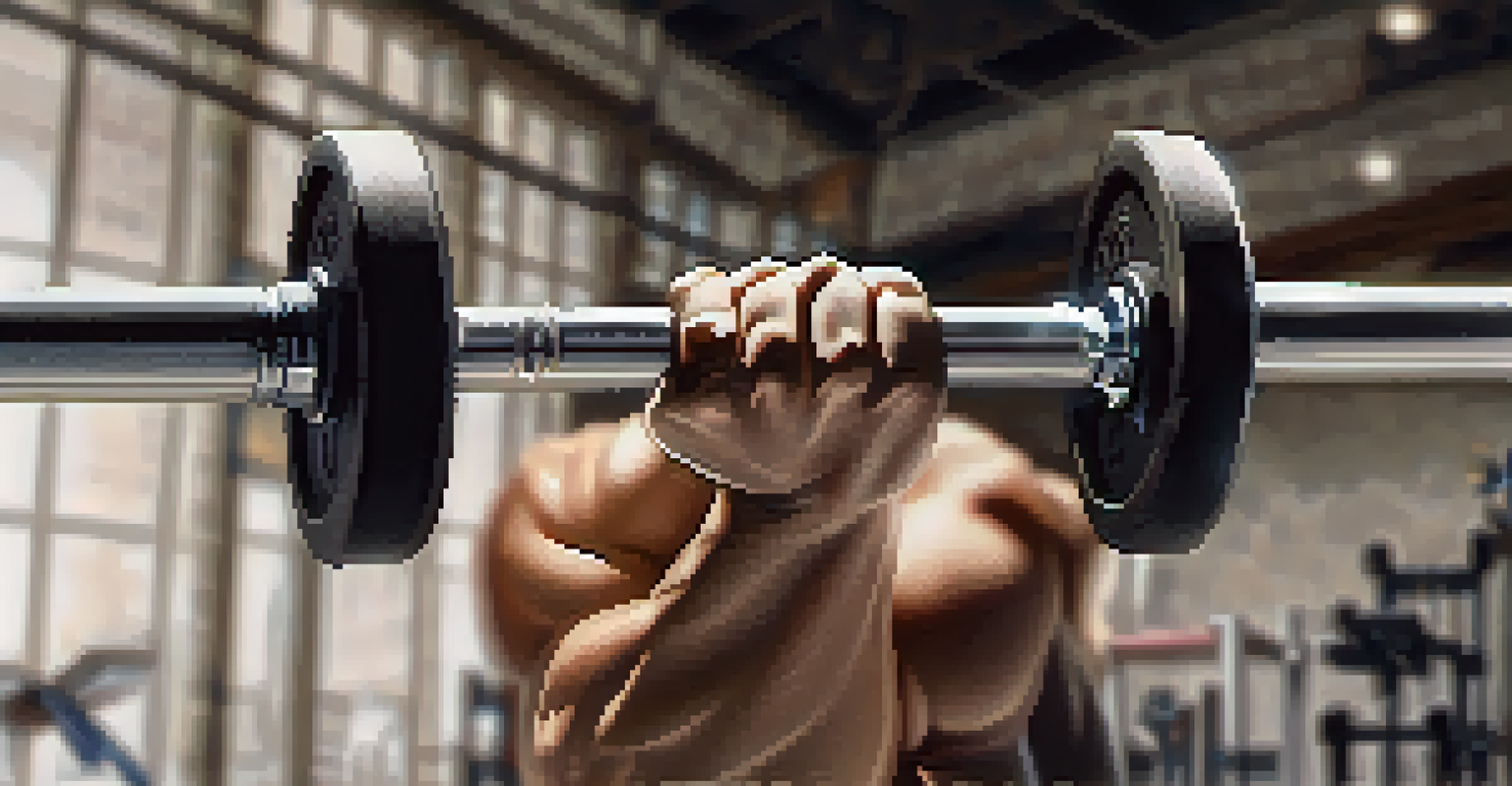Bench Press Basics: Key Form Corrections for Beginners

Understanding the Bench Press: An Introduction
The bench press is a foundational exercise in strength training, targeting the chest, shoulders, and triceps. It’s a staple in many workout routines and can help build upper body strength. However, proper form is crucial to maximize benefits and prevent injuries, especially for beginners.
Strength does not come from physical capacity. It comes from an indomitable will.
Many newcomers jump straight into lifting weights without fully grasping the technique. This can lead to ineffective workouts and, worse, injuries. By understanding the fundamentals of the bench press, you set yourself up for success in reaching your fitness goals.
In this article, we’ll explore some key form corrections that can help you lift safely and effectively. Let’s dive into the basics to ensure you’re on the right track from the start!
Setting Up: The Importance of Your Position
Getting into the right position before you even lift is essential for a successful bench press. Start by lying flat on the bench with your eyes directly under the barbell. This alignment helps in safely lifting the bar without hitting the rack.

Your feet should be flat on the ground, providing a solid base for stability. Many beginners make the mistake of lifting their feet off the ground, which can lead to a wobbly lift. Keep your core engaged and ensure your shoulder blades are retracted to create a strong upper back.
Master Your Form for Safety
Proper form is essential in bench pressing to maximize benefits and prevent injuries.
A solid setup ensures that you’re ready for the lift and minimizes the chance of injury. Remember, a strong foundation leads to better lifts and greater gains!
Grip Width: Finding the Right Hand Placement
Your grip on the barbell plays a significant role in how effectively you can bench press. A common guideline is to position your hands slightly wider than shoulder-width apart. This grip allows for optimal muscle engagement during the lift.
The only bad workout is the one that didn’t happen.
If your grip is too wide, you risk straining your shoulders, while a grip that’s too narrow can limit the effectiveness of your triceps. Experimenting with hand placements can help you find what feels comfortable and effective for you.
Remember, the goal is to keep your wrists straight and maintain control throughout the movement. A proper grip not only enhances your strength but also contributes to overall safety.
Lowering the Bar: Keeping Your Elbows in Check
When lowering the barbell, it’s crucial to maintain proper elbow positioning. Your elbows should be at about a 45-degree angle relative to your body, which helps in protecting your shoulders and maximizing power. Many beginners let their elbows flare out, which can lead to injury.
Lower the bar to your mid-chest, not to your throat or upper chest. This position allows for better muscle activation and a more controlled lift. Think of it as creating a straight line from your wrists to your elbows to your shoulders.
Engage Core and Feet for Stability
Engaging your core and keeping your feet planted helps improve lifting mechanics and power.
By keeping your elbows in check, you not only protect yourself but also enhance your performance on the bench press. It’s all about finding that sweet spot for maximum effectiveness!
Pressing Up: Engaging Your Core and Feet
As you begin to press the barbell back up, engaging your core is crucial. Your core acts as a stabilizer, helping to control the lift. Imagine tightening your abs as if someone were about to poke you – this tension keeps your body stable throughout the movement.
Additionally, your feet should remain planted on the ground, providing a firm base. Pushing through your heels as you press the bar up can help generate more power and stability. Think of your legs as part of the lift, not just a resting spot!
By maintaining this core engagement and solid foot placement, you enhance your overall lifting mechanics, leading to better results.
Breathing Techniques: Timing is Everything
Breathing may seem like a simple task, but it plays a vital role in your bench press form. The general rule is to inhale as you lower the bar and exhale as you press it back up. This breathing technique helps maintain your core tightness and supports your lift.
Many beginners hold their breath, which can lead to fatigue and decreased performance. Instead, focus on developing a rhythm with your breathing that complements your movements. This will not only help you lift better but can also enhance your overall endurance.
Avoid Common Mistakes
Recognizing and correcting common errors can enhance your technique and make your lifts safer.
Proper breathing techniques can make a significant difference in how heavy you can lift and how many reps you can complete. It’s a small adjustment that can yield big results!
Common Mistakes: Avoiding Pitfalls in Your Form
Recognizing and avoiding common mistakes is a key part of mastering the bench press. One frequent error is bouncing the bar off the chest, which can lead to injury and does not effectively engage your muscles. Instead, focus on a controlled descent and ascent.
Another mistake is lifting your buttocks off the bench during the press. This can strain your back and compromise your form. Keep your glutes on the bench and maintain a straight line from your head to your feet.

By being aware of these pitfalls, you can make necessary adjustments to your form. This awareness not only enhances your technique but also contributes to a safer lifting experience.
Progressing Safely: Knowing When to Increase Weight
Once you’ve mastered the basic form, you might be eager to increase the weight on the barbell. However, it’s crucial to progress safely. Start by adding small increments to ensure you can maintain proper form without straining yourself.
Listen to your body; if you feel compromised in your technique, it’s better to stick with a lighter weight until you’re comfortable. Progressing too quickly can lead to injuries and setbacks in your training.
Remember, strength building is a marathon, not a sprint. By prioritizing form over heft, you’ll achieve sustainable growth and avoid unnecessary injuries.